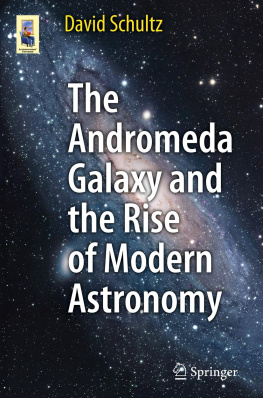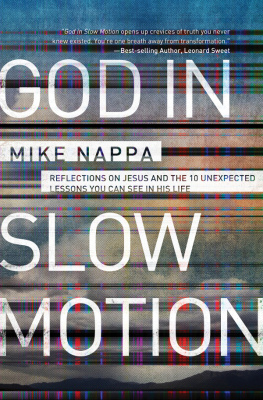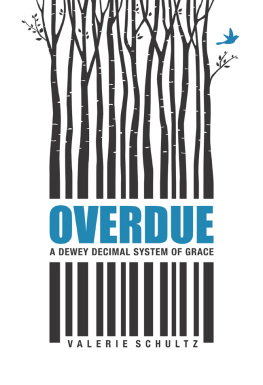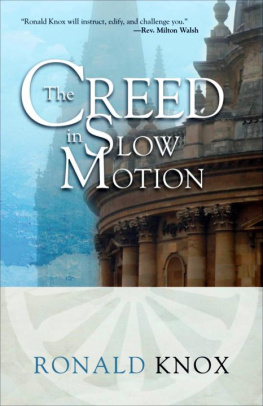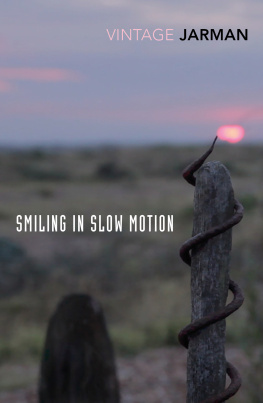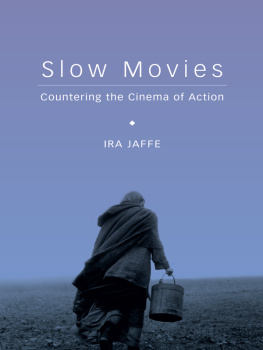Schultz - An Emergency in Slow Motion
Here you can read online Schultz - An Emergency in Slow Motion full text of the book (entire story) in english for free. Download pdf and epub, get meaning, cover and reviews about this ebook. year: 2011, publisher: Bloomsbury Publishing Plc, genre: Non-fiction. Description of the work, (preface) as well as reviews are available. Best literature library LitArk.com created for fans of good reading and offers a wide selection of genres:
Romance novel
Science fiction
Adventure
Detective
Science
History
Home and family
Prose
Art
Politics
Computer
Non-fiction
Religion
Business
Children
Humor
Choose a favorite category and find really read worthwhile books. Enjoy immersion in the world of imagination, feel the emotions of the characters or learn something new for yourself, make an fascinating discovery.

- Book:An Emergency in Slow Motion
- Author:
- Publisher:Bloomsbury Publishing Plc
- Genre:
- Year:2011
- Rating:3 / 5
- Favourites:Add to favourites
- Your mark:
- 60
- 1
- 2
- 3
- 4
- 5
An Emergency in Slow Motion: summary, description and annotation
We offer to read an annotation, description, summary or preface (depends on what the author of the book "An Emergency in Slow Motion" wrote himself). If you haven't found the necessary information about the book — write in the comments, we will try to find it.
Schultz: author's other books
Who wrote An Emergency in Slow Motion? Find out the surname, the name of the author of the book and a list of all author's works by series.
An Emergency in Slow Motion — read online for free the complete book (whole text) full work
Below is the text of the book, divided by pages. System saving the place of the last page read, allows you to conveniently read the book "An Emergency in Slow Motion" online for free, without having to search again every time where you left off. Put a bookmark, and you can go to the page where you finished reading at any time.
Font size:
Interval:
Bookmark:

CONTENTS
Chapter 1
Chapter 2
Chapter 3
Chapter 4
Chapter 5
Chapter 6
Chapter 7
To Theresa

The psychologist William Mcguire, in a long essay on hypothesis generation in psychologyan unfortunately neglected subjectmakes the following observation about the study of lives. It might be optimal, he suggests, to use cases with intermediate puzzlingness, not so obvious to be devoid of new information and not so obscure as to be baffling.
I have to confess. After six or seven years of trying to make sense of the photographer Diane Arbuslooking closely at her life, looking even more closely at her picturesI still feel, in many ways and with varying degrees of vexation, somewhat baffled. Arbus is a mystery. To get the shots that made her name she went to the bottom of the night, as Auden once said of Yeats, and I followed her there, risked the descent, but a lot of the trip remains, even now, more or less unilluminated. But thats the thing about darkness. You cant shine a light to see it. The dark has to stay dark. You feel your way around, then crawl back out of it with whatever cargo youve managed to pinch. On this same subject Nabokov quotes King Lear: To take upon us the mystery of things: this is my suggestion for everyone who takes art seriously.
There is an impulse in the study of artists to treat them as irreducibly unique, unreachably beyond the pale. Yes, art is a mystery, and Arbus is too. Yes, there is much about her and her work that can never be known. But we are all mysteries. Lives begin and end in mystery. What one works toward, and what I try to present in this book, are slipping glimpses of the mysterious X factor why , the elusive needs or motives or tendencies at the root of self-expression. What emerges is truth, but as direction, not destination, more a pathway than a location. We never know everything, but we dont know nothing.
Theres only one biography of Diane Arbus, Patricia Bosworths full-length study published in 1984. It is a brave, determined effort, written without the cooperation of an estate that tends to be inhospitable to even the most sincere and well-intentioned trespasses, and in many ways it succeeds. Facts are laid out. Several key figures are interviewedArbuss brother, the poet Howard Nemerov, and her mother, Gertrude Nemerov. A portrait forms. Arbus is a little bit less unknown. But in the twenty-six years since Bosworth, more has come to light. At long last the estate brought out its own contribution to the Arbus story, Revelations , with newly published pictures, an annotated timeline, and gingerly culled samplings from notebooks and letters. And more people have gone on record since 1984, talking about what it felt like to be photographed by Arbuswhat she said to them and what she asked them to do, the impression she left. This is all in the nature of biography. New facts have a way of trickling out, confirming or challenging prior understandings. And as they accrete, as they start to add up, sometimes anomalously, new possibilities present themselves. The time arrives for an updated picture, a revision of past attempts at meaning making. Not all revisions are revolutionary, but in the best of instances, they add a few more form-creating pieces to the overall jigsaw, the lifes gestalt.
This book is not a biography. My aim is not to present the life in all its fullness, from beginning to end. I deliberately leave stones unturnedsome dull, some shiny. Instead, my intention is to make sense of Diane Arbuss psychological lifeher goals, her dreams, her view of herself, her strategies, not all of them conscious, for dealing with difficult feelings, her modes of psychological defense, and most importantly the subjective origins of the pictures themselves, the art, the source of her fame. I interpret the pictures, in light of her life history, as self-expressions. The goal is to know better what she was after, what she was trying to say, whether she knew that clearly or not.
Analyses of lives that zero in on a persons psychology and, in order to do so, make use of psychological theory and research are usually called psychobiographies, a term of opprobrium for some. Bad psychobiographies exist. Ive read them. I have no interest in defending them. In fact, Im all for calling them bad when they are so. But the existence of bad psychobiography proves nothing about psychobiography in general, any more than bad dentistry proves anything about dentistry in general. Each instance rises or falls on its own merits. It works or it doesnt work. It persuades or it fails to persuade. Like most everything else in life, the proof is in the pudding. The fair, thoughtful reader will reach his or her own conclusion. There is no other possible arrangement, and it is one Im perfectly comfortable with. Sources do exist about the meaning and practice of psychobiography, for those with more than passing interest. One is my own Handbook of Psychobiography , which I edited for Oxford University Press in 2005. Another is a book by Alan Elms, Uncovering Lives: The Uneasy Alliance of Biography and Psychology . Both take a sympathetic line, and both contain plenty of examples of psychobiographical essays that make good sense of extraordinary people, from George W. Bush to Elvis.
The fact that I take a psychological approach to Arbuss art is not meant to suggest I find that angle sufficient unto itself. The pictures might be examined purely artistically, with no biographical context at all. They might, in other words, simply be viewedthough such an engagement is never quite simpleand understood from the inside out, more or less intrinsically, like found objects. This appears to be the Arbus estates recommendation, to take the shots as they are, unencumbered by any disfiguring life-history lens. The pictures might also be scrutinized in light of their historical comparables in photography, their milieu, their technical features. One might also connect them to other studies of so-called grotesques, photographic or literary. The possibilities are endless. My belief, however, is that in Arbuss case especiallywhere photography is referred to as a private sin, where pictures are called secrets about a secret, to cite only two asides by the artist herselfa psychological posture is necessary : not sufficient, but necessary. Knowing what Arbus was trying to get out, and why, lends power and poignancy to the images. Its an addition, not a subtraction.
My orienting assumption, then, which I work to defend with facts and interpretations, is this: Arbuss art revealed her in ways even she may not have grasped, and her method, her technique, her choice of a particular subject or individual print, and her thoughts on the purpose and meaning of photography all express personal and sometimes intimate, concealed truths. As would be true of any artist, the art is largelyfractionallycovert autobiography. I aim to make the covert overt. I superimpose the life on Arbuss art to better understand the art, and vice versa.
Art is always part pure expression, a consciously managed attempt to say something thats important to the person making it. It is what the artist intends it to be; it means what she wants it to mean. Arbus took the shots she did because she was Diane Arbus. The uniqueness of her vision was clear to her: I do feel I have some slight corner on something about the quality of things. I mean its very subtle and a little embarrassing to me, but I really believe there are things which nobody would see unless I photographed them.
Next pageFont size:
Interval:
Bookmark:
Similar books «An Emergency in Slow Motion»
Look at similar books to An Emergency in Slow Motion. We have selected literature similar in name and meaning in the hope of providing readers with more options to find new, interesting, not yet read works.
Discussion, reviews of the book An Emergency in Slow Motion and just readers' own opinions. Leave your comments, write what you think about the work, its meaning or the main characters. Specify what exactly you liked and what you didn't like, and why you think so.




